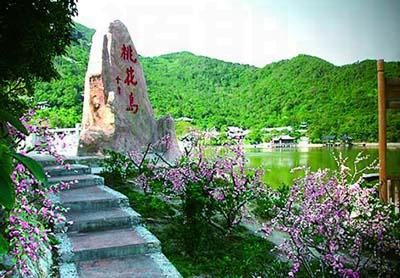Village: Prosperity in Name and in Deed
2009-05-28ByPanXuemei
By Pan Xuemei


The Village of Prosperity used to be a name only. It is in rural Huangyan District, Taizhou City in central Zhejiang. Over a long period of history, it had nothing to do with prosperity and it had everything to do with poverty. In 1978, the notoriously poor village was deeply in debt. It owed 100,000 yuan, huge money in those years; the average annual income for villagers was less than 100 yuan (about 40 dollars if calculated at the exchange rate of that time).
In 1979, the local government sent a work group to the village to implement the guiding principles of the third plenary session of the 11th central committee of the CPC. The villagers decided to start a small business. Zheng Pude, an ex-serviceman who was a man of capability and idea, was chosen to lead the villages historic modernization drive.
In June, 1979, Prosperity Village set up an arts-and-crafts factory. In compliance of the employment decision, twenty young people with junior school education (they were regarded scholars in those years) were employed. The other twenty job opportunities were offered to those from poverty-stricken families in the village. None of the village leaders or their relatives was in the factory. The workers painted eggs for an exporter. In the first year, they produced the goods worth 53,000 yuan and made a profit of 8,500 yuan. More importantly, the factory straightened its business channels and exported directly from Shanghai Port.
In the second year, factory employed another 40 fellow villagers. Again, those from relatively poor households were employed. The second year saw the factorys output skyrocket to 180,000 yuan and profit jump to 53,000 yuan. It was a huge fortune in the early 1980s.
In the fourth year, the factory expanded its productivity further. There were more than 300 villagers working at the factory, one from each household in the village for the first time. In 1988, the factory had 800 villagers on its payroll. That year, the average income for villagers topped 2,000.
In 1994, Prosperity Industrial Company came into being and modern corporate system was introduced into all of its subsidiaries. Since then the village business has further expanded. Today, the village enterprises produce a wide range of toys and crafts products and export to more than 30 countries and regions in Americas and Europe. Prosperity is now home to 100 separate businesses.
Now, the village serves as a local definition of prosperity. 24 million yuan has been put into the infrastructure of the village. A 150-million high-tech park in the village is now home to high-tech enterprises. Villagers now live in a 70-million luxurious residential zone. Villagers have turned their separate farming lands over to the village for unified high-tech farming arrangement. By 2000, the average annual income for villagers topped 8,000 yuan.
The new prosperity of the village produces more than material affluence. In addition to urbanizing the village and providing villagers with luxurious villas, it can do more for its villagers. For example, the village took care of its residents with difficulty in finding a wife in the middle 1980s. In order to help more than 20 men above 30 years of age in the village who were still single for various reasons, the village adopted very favorite policies for these men. All of them were given a 30% wage raise; a 20,000-yuan loan was offered if one got married; if a woman was willing to marry one of them, she would get a job in the village. With such attractive terms, all these men got to enjoy marital bliss.
A villagers teenage son was diagnosed uremia at a local hospital and was dying. The villager rushed the son back to the village and knocked at the door of Zhao Pude, the village chief, for help at midnight. Zhao arranged a car to send the boy to a hospital in Hangzhou the first thing in the morning and called the sales people of the factory in Hangzhou to help get the boy hospitalized immediately. With the money from the village and with the care of the hospital, the boy recovered miraculously. He has grown up in good health and is now happily married.
The material wealth of the village also leads to the richness of a cultural life. Now, Prosperity Village has a village club. The cultural life of the villagers is most colorful. The village has a team of Latin dancers. The coach is a villager and the team now has more than 100 hundred, including two men who have joined up recently. The village has a special training center which can seat 200 people in one lecture.
Prosperity is now a model. The villages business and village affairs are managed by the same leadership. In 1991, it became a provincial model village for its prosperity in both material and cultural wealth. In 2005, it was designated as a national model village by the central government.□
